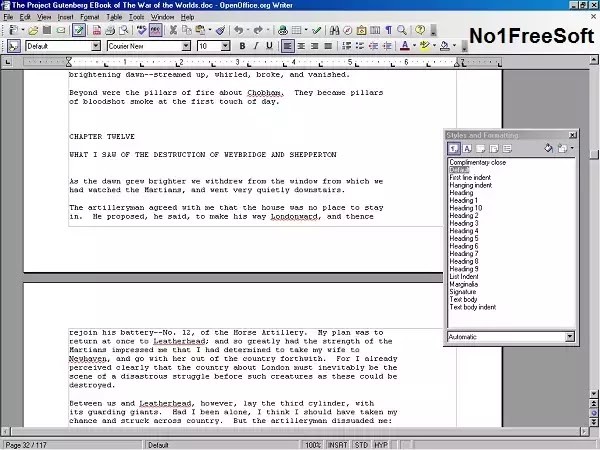
Note that page and numbering styles are not hierarchical and cannot have parent styles. The user interface names are provided through the property UserInterfaceName. At the user interface localized names are used. The same applies to changing the property Category. The method setName() in XStyle always throws an exception if called at such styles. These styles use programmatic names on the API level. The office comes with a set of default styles.

Void setParentStyle( string aParentStyle)

A collection of styles are received which is a .StyleFamily service, providing access to the single styles through an .XNameContainer or an .XIndexAccess.Įach style is a .Style and supports the interface .XStyle that inherits from .XNamed. The StyleFamilies service supports a .XIndexAccess.įrom the StyleFamilies, retrieve one of the families listed above by name or index. The .XNameAccess interface retrieves the style families by the names listed above. Its method getStyleFamilies() returns a collection of .StyleFamilies with a .XNameAccess interface. The text document model implements the interface .XStyleFamiliesSupplier to access these styles. Numbering styles are used to format paragraphs in numbered or bulleted text. If a "Next Style" is specified, the Apache OpenOffice automatically applies the specified page style when an automatic page break occurs.

Page styles are used to structure the page. These Styles are used to quickly format graphics and frames automatically. Apart from the normal format settings for paragraphs, the paragraph style also defines the font to be used, and the paragraph style for the following paragraph.įrame styles are used to format graphic and text frames. Paragraph styles are used to format entire paragraphs. The following style families are available in Apache OpenOffice.Ĭharacter styles are used to format single characters or entire words and phrases. Styles are packages of attributes that can be applied to text or text contents in a single step. This way it is possible to unify the appearance of a document, and adjust the formatting of a document by altering a style, instead of local format settings after the document has been completed. Styles distinguish sections in a document that are commonly formatted and separates this information from the actual formatting.


 0 kommentar(er)
0 kommentar(er)
